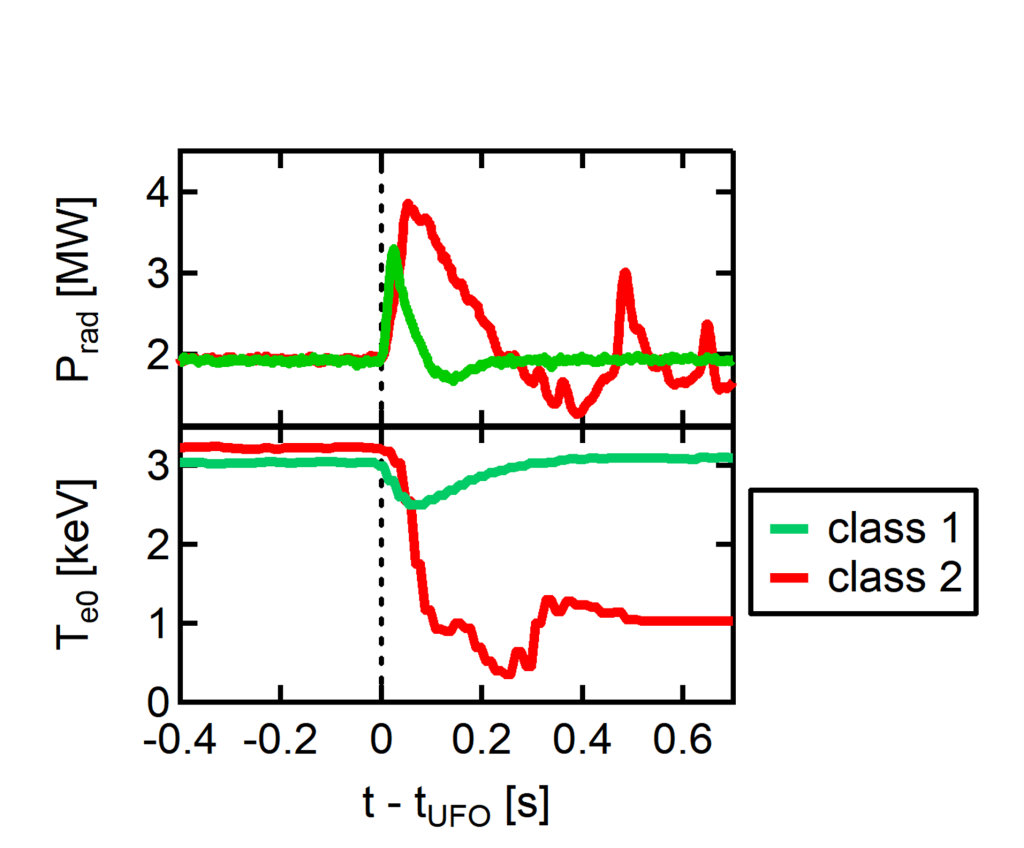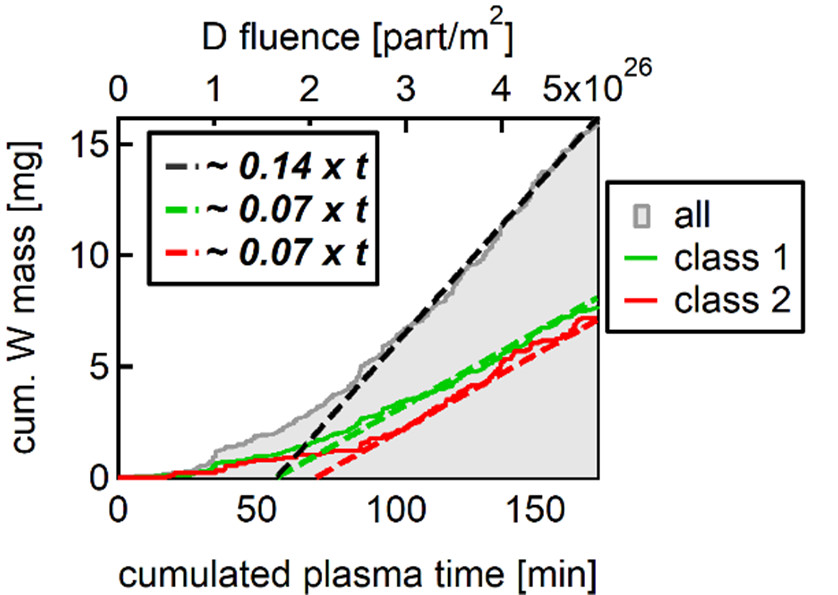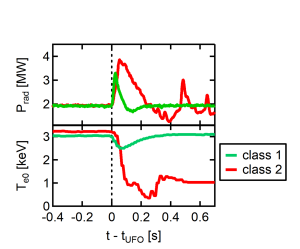Tungsten contamination in fusion plasmas must remain extremely low in order to maintain good performance in ITER and future fusion power plants. The experiments carried out in WEST provide crucial information for anticipating this challenge in ITER.
In a fusion power plant, the material facing the plasma in the combustion chamber will be subjected to high thermal, mechanical, and neutron stresses that could significantly impact its service life. It will also need to limit erosion and the trapping of tritium, a radioactive isotope of hydrogen used in the fusion reaction.
One of the challenges of the ITER tokamak will be to demonstrate that tungsten can be used in future fusion power plants as a plasma-facing material. Tungsten was chosen for its high melting point, resistance to physical erosion, and lack of chemical affinity with hydrogen. However, its high atomic number makes it highly radioactive in the plasma environment where fusion reactions occur, to the detriment of energy confinement and therefore performance. It is therefore crucial to understand, in current facilities, how to limit its erosion and migration to the core of the plasma where fusion reactions occur.
The WEST tokamak, built and operated at CEA Cadarache by IRFM, is an ideal facility for advancing knowledge on this subject, thanks to its ITER-technology tungsten components in the wall area that interacts strongly with energy and particle flows, known as the divertor. These components are actively cooled and subjected to intense exposure over long periods of time, thanks to the superconducting magnets and wave current generation provided by the WEST tokamak. This ability to produce long-lasting plasmas has been demonstrated year after year, increasing from one minute in 2023 to six minutes in 2024, and more recently to 22 minutes in early 2025. Beyond the numbers, these performances have highlighted several phenomena specific to potentially unlimited operation, which provide answers to questions about the compatibility of a tungsten wall with the operation of a fusion power plant [Maget2024].
Experimental campaigns conducted at WEST have shown that there is a balance between erosion caused by energy and particle flows hitting the wall and plasma contamination: an increase in flow does increase erosion and plasma contamination, but it also induces stronger radiation at the core of the plasma, thereby reducing the heat flow escaping from it [Fedorczak2024]. The resulting equilibrium point also varies depending on the spacing between the plasma and the wall in the outer equatorial region where the microwave antennas for heating the plasma are located [DiGenova2024].
The evolution of the ITER technology divertor components installed in WEST was evaluated after a campaign lasting several weeks, representing more than 3 hours of cumulative plasma. Erosion of the tungsten on the divertor surface was observed, along with the production of redeposited layers nearby. The detachment of these deposits, under the effect of thermal stresses, projects dust particles of a few micrograms of tungsten into the plasma. The resulting radiation peak can cause significant destabilization of the plasma [Gaspar2024] (figure 1). A quasi-steady state of dust production entering the plasma was achieved after one hour of cumulative plasma (around 6 dust particles per minute of plasma), representing approximately 140 µg of tungsten per minute (Figure 2). These experiments conducted in WEST also showed that the plasma can only absorb dust particles smaller than 20 µg, due to the strong radiation they induce, but this threshold certainly depends on the energy available in the plasma to cope with it.

Figure 1: Impact of tungsten dust (at tUFO) entering a WEST plasma on power lost through radiation (top) and electron temperature (bottom), for dust particles weighing less than 10 µg (class 1, with a return to normal) and more than 20 µg (class 2, leading shortly thereafter to plasma extinction).

Figure 2: flux massique des poussières de tungstène arrivant dans le plasma en fonction du temps plasma cumulé sur une campagne de WEST. Le plasma survit aux poussières de classe 1 (~10 µg), mais s’éteint pour des poussières de classe 2 (>20 µg).
However, there are strategies for reducing or even eliminating the erosion of tungsten components in the tokamak wall. Adding a small amount of light gas (nitrogen, argon, neon, etc.) to the reactive mix has the effect of radiating some of the energy available at the edge of the plasma, significantly reducing the plasma temperature in the divertor and thus the energy of the incident particles. This regime, in which the energy of the incident particles is low enough that they cannot, in principle, erode the tungsten, is a very promising avenue for ITER and fusion power plants. Controlling this regime requires mastery of the fraction of light elements injected. Such control was achieved in WEST in 2024 for about ten seconds, and for about thirty seconds in 2025. Future experimental campaigns will be dedicated to accumulating several hours of plasma in this regime and evaluating its impact on divertor erosion. The physical mechanisms that contribute to the stability of this regime are not yet fully understood. [Rivals2024]. However, the implementation and modeling of this “cold” divertor regime on different tokamaks is helping to better anticipate its control in ITER.
[Maget2024] Tungsten control in long pulse operation: feedback from WEST to ITER, Plasma Phys. Control. Fusion 67 (2025) 045005, https://doi.org/10.1088/1361-6587/adba0d


